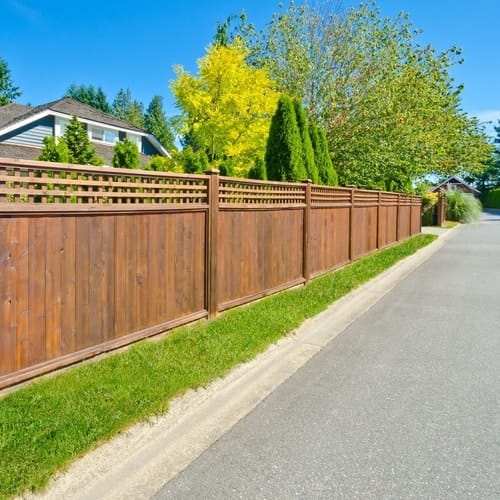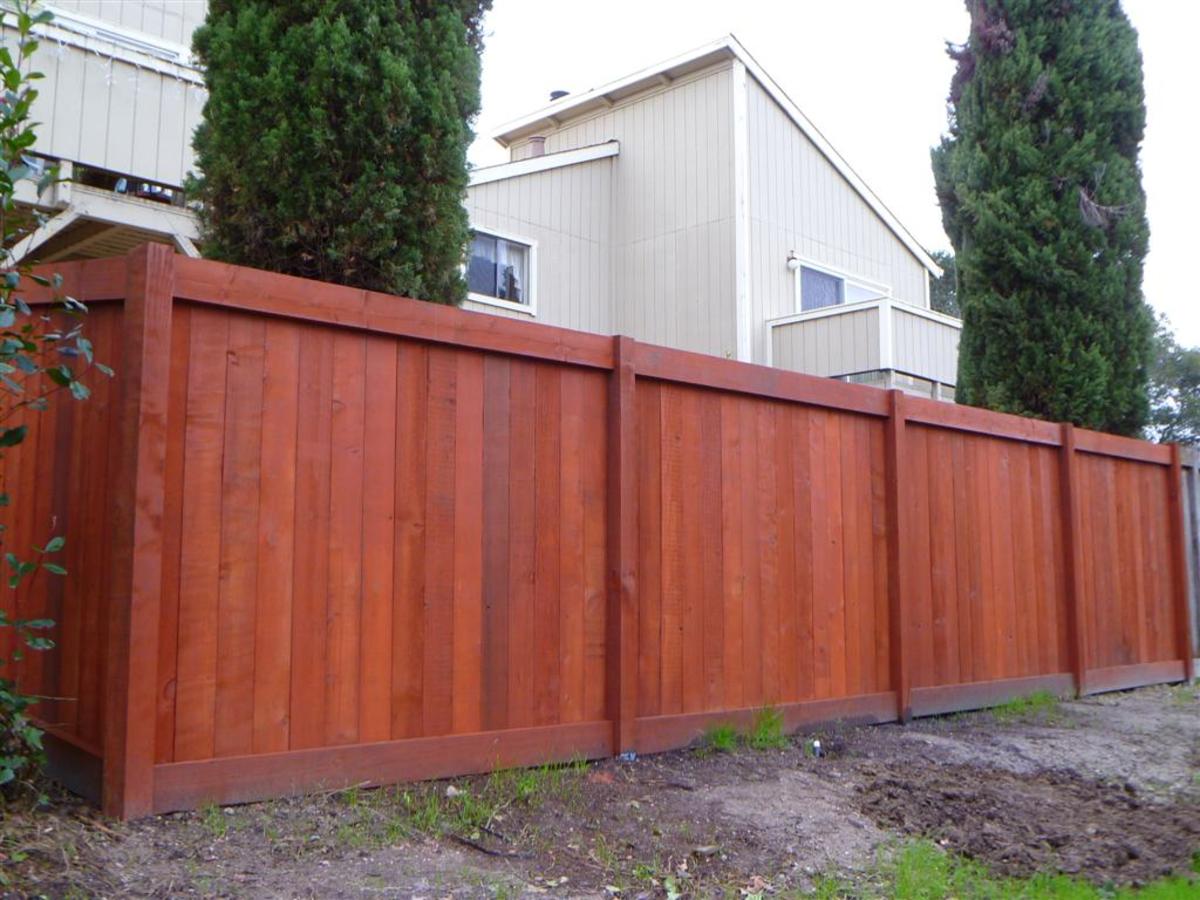Fence Discoloration 101: Everything You Need to Know for a Magnificent Finish
When it comes to enhancing the visual allure and prolonging the life expectancy of your fencing, discoloration is a critical aspect that demands interest to information. The procedure of fence staining includes greater than simply selecting a color and using it carelessly. From picking the right sort of discolor to diligently preparing the surface and carrying out the application approach, every action plays a significant function in attaining a flawless finish. By comprehending the basics of fencing staining, you can raise the look of your exterior room and ensure the protection of your fence against different components.
Picking the Right Stain
Determine the type of wood your fencing is made of, as different wood types respond differently to different spots. Some spots might call for more frequent reapplication than others, so select a discolor that straightens with your upkeep preferences. By taking these factors into account, you can select a tarnish that not only secures your fencing but additionally improves its total appearance.
Preparing Your Fencing
Prior to applying the chosen discolor to your fencing, it is necessary to appropriately prepare the surface to ensure ideal outcomes and longevity. Fence Staining Near Me. The primary step in preparing your fence is to clean it completely. Utilize a pressure washer or a scrub brush with a mix of water and detergent to eliminate dirt, gunk, and any type of mildew. Allow the fence to completely dry completely before carrying on to the next step.
After cleansing, inspect the fencing for any damage such as loose boards, nails, or screws. Ensure to tighten any kind of loosened parts and change any kind of damaged parts. Sanding the fencing is the following important step to make certain a smooth surface area for the stain to stick to. Use a medium-grit sandpaper to remove any type of rough places or old stain that might be peeling.
Lastly, shield any locations you don't wish to stain by making use of painter's tape and plastic sheet - Fence Staining - Fence Staining. This will certainly ensure tidy lines and avoid unintentional discoloration of other surfaces. Appropriately preparing your fencing will not just boost the final look yet also add to the long life of the stain

Using the Discoloration
To achieve a professional finish when discoloring your fencing, make certain that you use the tarnish in even strokes following the wood grain direction. Prior to beginning, tremble or stir the stain extensively to mix any settled pigments. Using a top quality brush or a paint sprayer, start using the stain from the top of the fence, functioning your method down to prevent drips.
Operate in workable sections to keep a damp edge and protect against lap marks. If utilizing multiple canisters of discolor, blend them together to ensure shade consistency. Maintain an eye out for any type of drips or runs and smooth them out right away. After completing the whole fencing, enable ample drying time based on the producer's instructions before using a second layer if preferred. Proper application is crucial to achieving a beautiful and resilient finish on your fencing.
Tips for a Specialist Finish
Accomplishing a specialist finish on your tarnished fence calls for precise attention to detail and adherence to best methods in application strategies. To ensure a magnificent result, begin by extensively preparing the fence surface. Clean the fencing of any dirt, debris, or old discolor making use of a pressure washing machine or a tight brush and soapy water. Allow the fence dry totally before continuing with the discoloration process. Select a premium discolor that appropriates for your fence type and environment problems. Prior to applying the stain, protect surrounding areas with plastic sheet or decline towels to protect against unintended spills or splatters.
When it comes to using the stain, make use of a brush, roller, or sprayer for an even and regular coat. Enable the stain to dry completely according to the manufacturer's guidelines prior to considering a 2nd layer.
Maintenance and Treatment
Making certain regular maintenance and appropriate treatment of your stained fence is crucial for preserving its appearance and architectural honesty over time. To preserve the sensational coating attained through staining, it is suggested to check the fencing at the very least yearly for any type of signs of wear, damage, or discoloration. Attending to concerns promptly can prevent them from escalating and needing extra extensive repair work.
Routine maintenance tasks include cleaning up the fencing with a light cleaning agent and water to get rid of dust, crud, and mold that can accumulate in time. Furthermore, cutting any kind of plant life that enters into contact with the fence can prevent damage from overgrowth. Check the discolor for indications of fading or deteriorating, and consider applying a maintenance coat every 2-3 years to keep the fence looking fresh and dynamic.
Proper care additionally entails protecting the stained fencing from rough components by taking into consideration variables such as sunlight exposure, moisture, and temperature variations - Fence go to my blog Staining Service. Using a safety sealer can further enhance the longevity of the stain and protect the wood from environmental damage. By following these upkeep techniques, you can make certain that your stained fence continues to be a beautiful and durable asset to your building for several years to find
Conclusion
